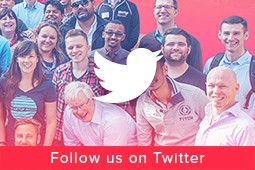I’ve launched a new venture fund investing in unruly founders. Read the launch manifesto here!
Tag: Venture Capital
On seed rounds valuations
Valuations on seed rounds are a timeless debate.
Every 6 months at YC Demo Day time the debate gets reignited given the average YC company raises at a pretty vertiginous valuation.
As usual, a tweet sparked it all:
Ilan introduces the debate from the founder’s perspective: if you are raising a seed round at a $15-20M cap (which if pre-money, means a $25+ post most of the time), Ilan’s argument is that it dramatically increases the difficulty of raising a Series A or Seed extension at a higher valuation.
Should you maximize the valuation when raising a seed round?
That’s the question every founder asks himself. Well, not everyone: some just go straight for the highest val possible.
There is a whole LOT of advice online, but the survivorship bias present in all of the advice received from both founders and investors doesn’t really help making the decision.
The way I like to think about it is in the framework of upside maximization and downside minimization.
If everything goes amazingly with your company and product during the seed phase, then obviously having maximized the valuation will result in the lowest possible dilution.
But, if things don’t go that well, and let’s face it – things never go that well, and the road to Series A will be a tad longer, then having a super high val starts to become a truly existential issue for the company.
I’ve raised two seed rounds on the entrepreneurial side, both very large and both at steep valuations, and I’ve regretted both of them.
Raising 2.5-3M on a $15M cap, means that you’re already at a $18M post. If it takes you a bit longer to find product market fit or prove the metrics that are needed for a Series A, then you’ll have to do a seed extension (second seed, seed +, bridge, whatever your preferred naming is) – and things get ugly very fast there, for both the entrepreneur and the investor.
So at that point you have three choices:
- Extend the seed at the same valuation. This sounds easy enough but there’s a number of problems:
- raising at the same valuation of 2 years prior is never a great sign, for previous nor prospective investors
- the dilution hit will be significant, as it’s essentially doubling the amount of the initial seed raise
- and on top of that, a $18-20M post is still steep for a company that hasn’t proven itself!
- Raising at a lower valuation: this is basically a no-go
- Swinging for the fences and trying to do a seed+ at a slightly higher valuation:
- not everyone will be able to achieve this
- the problems of the first point all mostly stand, especially the new even steeper val
Note: YC has recently introduced post-money SAFEs which should solve this aspect, but the point on dilution stands.
So essentially as a founder, you have a bit of extra equity to gain if all goes well, but you’re essentially gambling the company away for it, because if something doesn’t go to plan, those three options up here aren’t all that desirable.
Should you care about pricing when investing?
Soon into the debate, Garry Tan weirdly enough missed the whole point of it all and switched it completely towards the investors side.
Felt really weird, but now we’re here. And pricing is one of the most interesting debates going on in venture investing – and one where you usually find two very opposite camps.
The argument for price insensitivity
As you can see, the YC camp is firmly in the “price doesn’t matter” camp. For the YC-school thinkers, the power laws of venture capital make it so that getting into the right company at a high price will dwarf the returns of getting into an average company at the right price.
Essentially, the only thing you should really care is finding, and getting into that unicorn.
They make it sound like it’s the most obvious thing, but the reality is way more nuanced.
The first thing to realize are the incentives: YC, until recently, used to get a ridiculous $300k post valuation (they invested 20k for 6.06% common stock, and the $100k at $10M post for 1% actually came from a YCVC fund with other investors). (I don’t know the structure of the new $150k deal).
And then, when you look, the people that tell you this, all got into their best deals at extremely cheap pricing. The first round for Twitter, Uber and so on, where all on single-digit post valuations, something that rarely even happens again now.
But the argument usually goes: getting into Uber at $5 post or $20 post doesn’t really matter, the important is getting it.
But the reality is that it does matter. The difference is a 4x return.
Some quick venture math
So say that you have a $30M fund ($25M investable after fees, 20 $500k checks and $15M follow ons)
Your $500k check. At $5M post, you’re getting a solid 10% of a company. At $20M post, you’re getting 2.5%.
Skipping pro-rata math for simplicity, and assuming a solid 70% dilution before exit (option pools and other investors do take a lot of space on the cap-table), you will be left with a 3% or .75% depending on the post valuation you invested in.
This means, that to return your fund twice over, the first investment requires a $1B exit, and the second one a whooping $4B. A $15M difference in cap at seed means $3B plus in difference at exit (or $30B, if we’re talking about a $10B vs $40B exit).
This simple math makes it clear to me that both camps are right: if you get an Uber / [insert other ginormous decacorn here] then you will be just fine.
But it’s also clear that raising the post-val meaningfully raises the stakes.
First of all, even in a decacorn-like situation, you’re returning a fraction of the capital you would have at a lower valuation.
But more importantly: not everyone will get a decacorn in their portfolio.
Imagine getting a company you backed at the seed round with one of the leading seed checks in the deal achieve a $1B exit (and there are only 10-20 every year in the US), which would make you one of the top investors in the country, but returning just a quarter of your fund on it. ($1B*.75% = $7.5M)
In my book, that would be a pretty miserable failure.
So: if you are extremely confident that you will find your decacorn, then by all means, investing at $20M pre is fair game. But, if like most investors, you think that already finding one $Billion dollar outcome in your fund would be a success, then being disciplined on pricing is a must-have attitude.
Announcing Unplug and the 2018 Winter Venture Retreat
Last September, together with a good friend, we organized the first edition of the European Venture Retreat.
It was a crazy experiment, that we organized on a whim. And we had an amazing time.
You can see the video of the event here:
and some select pictures here:










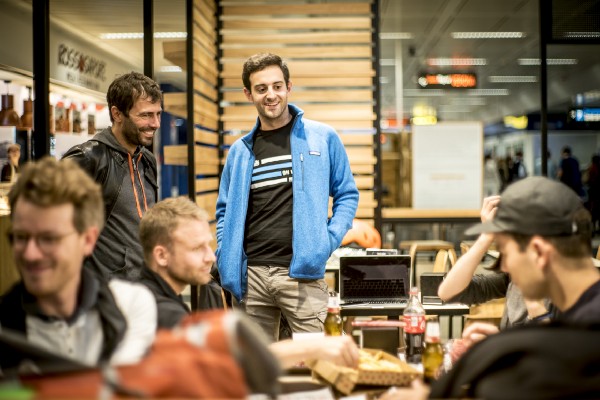









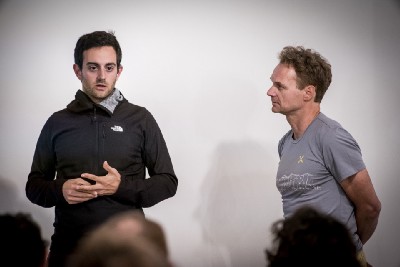


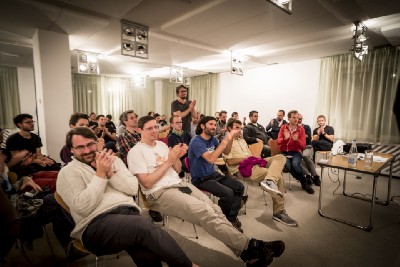


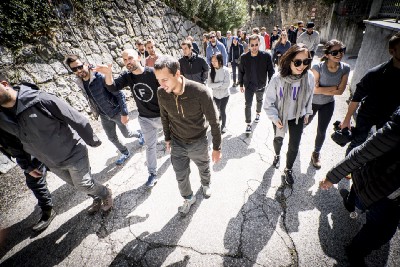




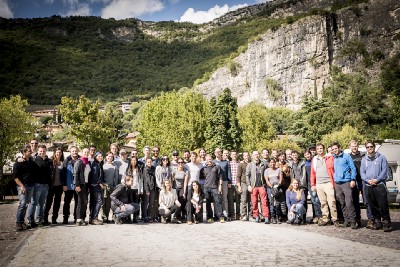
(You can see the full album on Facebook)
We had people come from almost ALL of Europe, including Malta, Romania, Finland, Spain, Switzerland and so on, representing a lot of top EU funds and many crypto organizations like Placeholder and Aragon.
People got to chat while they climbed the mountains, while they enjoyed traditional food and while they slept in 12-people rooms in their bunk beds.
It was a different experience from the usual conference, and we were really glad to hear that people really enjoyed it.
So we’re doing it again!
With Lorenzo, we decided that the experiment was successful and we’re going to continue to organize epic mountain retreats for investors and entrepreneurs, and maybe even more people.
The goal and spirit is very much the same as the first edition:
- bring high quality people in a natural setting and let nature and its activities create bonds between them
- unplug from the daily hustle and refocus on what is really important
- get exposed to different opinions and ways of thinking, and bring it all back with you
Our good friends at Belka have also designed us a new amazing website that embodies what we want to do.
2018 Winter Venture Retreat
We have designed a truly epic, 3-day adventure near Canazei in the Dolomites.
We will have bonfires,

epic skiing,

stunning private SPA sessions

snowmobile trips

night sledding

and lots, and lots of amazing food




all in our own PRIVATE hotel

You should really sign up for an invite at unplug.vc, we hope to see you soon!
Announcing the 1st edition of the European Venture Retreat
A full weekend to unplug in the Dolomites with awesome people

About one year ago, I moved from San Francisco to northern Italy, close to the Dolomites.
When I was a kid, my parents used to bring me in the mountains to get nice fresh air for a medical condition I had. Since then I’ve been in love with the colors, the smell, the air, the physical activity, the sports, the views, and the culture of the mountains.
Now, I am fortunate to live all of this every single day. And it has helped me immensely to reduce stress, focus more, and think about what is really important for me and my family.
When I was in SF, one of the events I enjoyed the most was Camp YC, a weekend in the woods organized by Y Combinator. I loved the fact that it had a lot of unstructured time and that you could chat with fellow entrepreneurs around a campfire.
Given I can’t attend Camp YC anymore, and I want others to enjoy all that I’ve been having for the past year, I decided to organize something like it over here.
And so, the European Venture Retreat idea was born.
What is it?
The European Venture Retreat is an invite-only weekend-long retreat in the Dolomites, with 70 investors, entrepreneurs and generally very interesting people.
Is there a website?
Of course there’s a website.
When is it?
September 14th-17th, 2017
Is it a conference?
Definitely not. There are no big keynote speeches or workshops or panels. I’ve grown pretty tired of all the usual formats.
This is a weekend to unplug. It’s more like a vacation with a bunch of really interesting people.
But most of all it’s a way to create more meaningful relationships than the ones you can create at a conference.
So if it’s not a conference, what’s the agenda like?
The main activity will be hiking, and exploring the mountains. We will also have additional activities like night-time sky exploration, yoga and meditation.
We will have a lot of relax time that will be spent to forge deep relationships with the other participants, the ones that you create when you share a room in a mountain hut and share meals.
We will network and we will also have some mini-talks if the participants are interested.
Is this a luxury 5-stars event?
Absolutely not! This is a mountaineering expedition.
It’s the most spartan event you’ll attend this year, guaranteed.
We will be in a mountain hut at 2.440m with all logistical consequences: hard to get water, little space.
We will be sharing rooms (2 people the first night, 4–8 people in the refuge), and will have two tokens for showers (use at your own discretion, or sell them to others! Probably won’t have time to create an exchange so it’ll have to be OTC 😂)
It will be cold outside and it will be tiring to get to the refuge. You should only attend if you want to experience a mountain adventure.
Who’ll be there?
We have invited a wide spectrum of participants, with a focus on VC investors, angels, and startup founders.
I don’t think the #1 reason to come should be if there’s a celebrity VC or founder, as I think the best and most fruitful relationships are created with unexpected people. All I can guarantee is that the people will be extremely interesting and diverse.
We don’t want to have 2–3 rockstars and have all the attention focused on them, and have their and everyone’s experience be terrible. We want to create bonds that wouldn’t have been created otherwise.
I personally prefer to chat with people that are still hungry and interested in weird things, and that has also the benefit of creating a much more future-proof network.
But, we can share that we have many YC founders as well as participants from the following funds:

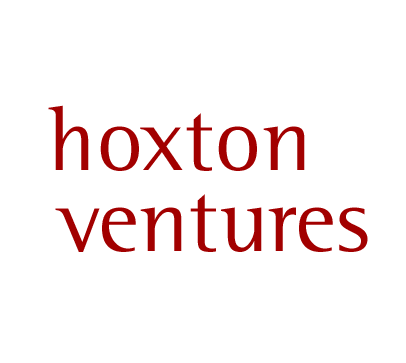

There will also be a solid presence of people interested in crypto-currencies.
Where will it be held?

See that small red-roof? That’s the TierserAlp Refuge, at 2,440m.

Promise it’s awesome.





















How fit do I have to be?
You just need to be able to do a 2.5h hike to get to the refuge. We’ll break into multiple groups if people want to go faster / slower.
Kids can do it, but it is tiring.
How do I get an invite?
You can request an invite here.
Logistics
- We leave from Verona at 2030 hours on Thursday evening.
- We’ll sleep in a hotel at the base of the mountain the first night.
- We’ll hike to the refuge Friday am to get there by lunchtime.
- We descend Sunday am, eat in a local place and aim to be in Verona by 5pm.
Plan travel accordingly!
Pricing
I’m pretty proud of the fact that we have managed to keep the event at an amazing €389 price for early-birds. Price jumps to €499 for late tickets, if there will be any.
I’ve seen one-day events where you pay thousands of dollars, and come back with the same old boring stack of business cards and nothing more in your life.
Here, you’re just paying for your accommodation, travel and food expenses. You’re not paying anyone’s flight and luxury pre-conference dinner and most certainly a yearly salary to me (although BTC donations are welcome 🤑).
What’s included?
- 3 nights accommodation
- 3 breakfasts
- 3 lunches
- 2 dinners
- Travel to-and-from Verona
Ask for an invite now.
We are on a tight timeline and tickets will sell out soon. Ask for an invite here.
Unfortunately space is constrained by the capacity of the mountain hut, so we can only extend so many invites. Sorry in advance if we can’t accomodate everyone.
NordicNext slides on Tokens and ICOs
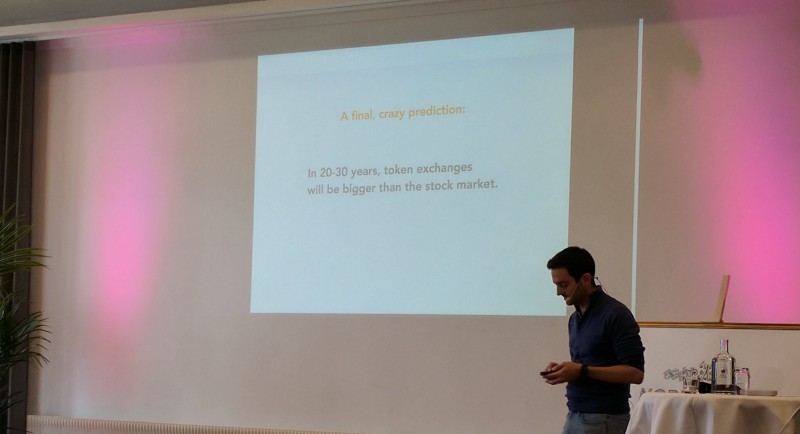
I had the pleasure of being invited at Nordic Next by Neil S W Murray, and what a fantastic event it was. Extremely well produced and with really solid people attending. It was great to get back in the European scene after so long in the US and also put real faces to internet names (👋 Philipp).
Before starting the talk I asked how many people owned BTC, ETH and altcoins, and was surprised to see about a 50%-40% and 20% response.
The slides are mostly informed by the amazing thinking of some of the leaders in the blockchain space, to which goes all the credit, as well as my initial post on the token phenomenon:
The response to the talk was amazing, but the thing I was really glad for were some of the usual blockchain pushbacks that we have had to hear for years now (no real world application, no intrinsic value, it’s only good for drugs and thiefs, etc.).
This means that we are still in the very, very early days.
Here are the slides (with a few edits) and a bonus video for all the believers.
To keep track of all the new projects being launched in the space, I’m launching a newsletter called Token Economy very soon.
If you want to be kept up to date, you can subscribe on TokenEconomy.co.
The first real revolution in venture capital: crypto tokens
What it means and why you should pay attention
I’ll be at Blockshow Europe in Munich this week, if you want to meet feel free to tweet at me!
Venture capital has largely remained unchanged since it was invented.
A few months ago I’ve compiled a list of the most innovative VC firms out there (link below). These are certainly important evolutions and innovations but the core mechanic has practically never changed.
And then, suddenly, while every one was trying incremental innovations.. the crypto revolution happened.
My single best investment was one that was unlike any other: I’m obviously talking about the Ether crowdsale that Vitalik launched in 2014, raising $18M. I think we’re now at 150x and going.
This was a totally new and innovative concept. Ethereum sold an initial supply of tokens in exchange of BTC to fund the development of the platform.
Given the fact that the tokens might prove to be extremely useful in the future in order to use the Ethereum blockchain and smart contract platform, people bought them with two intentions: in order to use them, and because they believed they would have appreciated substantially (as BTC did).
Crowdfunding was certainly not new, with already many equity-based crowdfunding platforms fully operational, but for many reasons it didn’t really succeed anywhere.
But the difference here was massive: the value had completely been removed from the equity of the development company and had instead been moved to the protocol being developed and its tokens.
For someone who has always invested in equity, that’s quite the change.
The era of crypto token crowdsales and ICOs
Since then, it has been a whirlwind of new currencies, blockchains and dApps being launched on different platforms.
Some have been exceptionally spectacular, like the DAO, others have been scams, and others have just been unsuccessful.
Why we should pay attention
I think there are three main reasons to pay attention to this new wave:
- 1) Investing in protocols and not companies
- 2) Problems with VC
- 3) VC will have to move fast to capture value
1) Investing in protocols
Albert Wenger has a great post about this: Crypto tokens and the coming age of protocol innovation.
For the first time in history we have the technology to invest in the protocols themselves (via the tokens needed to use them).
This is just massive, and will open up a wave of development given the new economic incentive being available.
It’s extremely interesting to think about what it could mean, and one particularly cool interpretation is the fat protocol hypothesis from Joel Monegro.
I think this will be a big trend, but I also think there will be some very big successes being built on the application layer, and for those ones the ICO model might not be the best.
2) Problems with the VC model
Many teams have turned to the ICO route because of a frustration with the venture capital model.
VC is by definition very scarce (for good reasons) and thus not available to everyone.
Usually, the “everyone” referenced above means teams in the very earliest stages, teams that are distributed, teams that aren’t in the hot startup hubs and teams that have non-traditional backgrounds.
People got frustrated with this and are seeing ICOs as the best avenue to raise funding for their own projects.
3) VC will have to move fast to capture value
To capture the most upside, VCs always have to invest at the fringes. When the fringes go as far as to change the model, the only way is to adapt.
I think we will see VCs exploring this space and new models more and more as well as token-raisers go more towards a normal fundraising path.
Why this is awesome
More innovation
If more teams and projects can get non-traditional funding, we will see many more teams building crazy new things.
Non-US teams
ICOs and crowdsales seem to be perfectly suited to teams that are not in a hot startup hub, so these teams will probably end up benefiting the most in the short term.
Liquidity
Tokens are fully liquid from day-1. This changes the game massively.
Public
Anyone can become an investor and prove that they can generate meaningful returns.
(I’m not exactly sure on how this compares to the public markets and hedge funds, but) it surely opens up the game to way more people than angel investors and people who have the right pedigree to raise a VC fund.
The problems
It’s not all roses, there might be some tulips too.
Useless tokens
With this new tool available a lot of people are inventing tokens just for the purpose of fundraising, even if their app has absolutely no need for a native token. Olaf Carlson-Wee illustrates this well in the podcast below:
Ether is valuable because there is an expectation that many more dapps will be built on the Ethereum platform and therefore many people will be in need of Ether to use such apps.
But, as an example, the Matchpool token will only become massively valuable if there will be an extremely high demand for it (or assumption of such in the future) — and this would only happen if that single specific app actually blows up. We’ve added quite a few layers of risk here and are getting much closer to a pure VC-based evaluation.
For some companies, a traditional VC route would be much more suited — but the hype is so strong that they can raise millions without ever being questioned by anyone or give out equity.
Misalignment of value captured / no equity
When people invest in a crowdsale, they are purchasing tokens that are usually not backed by any offline security or asset.
This means that if a dapp becomes successful, the token holders would only see an appreciation if the success mechanics generate a strong need for the token.
But in reality, the value could very well be stored in the equity of the company building the dApp as it actually holds the brand, the employees, the knowledge and could be the recipient of different revenue streams.
Were a company to be a acquired, the token holders would see absolutely no reward other than a potential hype-based fluctuation in the price of the token, while the founders would become millionaires.
Every time incentives start to become misaligned, problems tend to soon creep up.
One-time fundraising
Most of the crowdsales we’ve seen to date have no concept of multiple rounds of fundraising.
This to me seems completely idiotic. There is a good reason for diving the fundraising process in rounds: risk. You would be crazy to assume all of the risk of a company being successful at the very beginning of its existence, yet this is what most token investors are doing.
VCs instead buy a small piece of the risk at the beginning, and after a while have the luxury to re-evaluate and see if the company has completely failed to deliver on its promises or if they instead did well. The VC can then decide if they’d like to continue putting capital at risk.
This is one of the most blatant flaws of the token space I’m seeing, and I think and hope it will be solved soon.
Given that smart contracts are already being used, it would make sense that these contracts have built in mechanism for fund tranches based on objective metrics (pre-determined tranches are never a great idea, but they’re certainly better than a one-time full-budget investment).
Unsophisticated investors
Most startups don’t get funded for good reasons.
It seems that nowadays any random project can raise funding with a token crowdsale, and most of these projects do not meet even the most basic requirements to be an interesting risk-adjusted investment.
Contrary to popular belief, being a venture capitalist who actually makes some money for its investors, or even just being a non-money losing angel investor, is extremely hard.
Now, on the high of the immense gains made on BTC and ETH, unsophisticated investors think that many of these tokens are great investments, when in fact they are not.
Venture capital actually exists for a reason
Venture capital has been invented to fill a need, and has evolved and survived in its current model because it actually does make a lot of sense.
Getting professional managers to choose the investments and help the companies they invest in has been proven to generate amazing returns, for the ones that do it well.
Creating diversified portfolios makes sense.
Diving fundraising in tranches makes sense.
Only funding the very best teams in the very best markets makes sense.
And so on.
The help that companies get from VCs is also oftentimes non-negligible, and there’s a reason why the best teams want to pick their investors even in a very liquid situation like a hot deal.
So, doing away with the whole structure of VC seems to be too big and too irrational of a change in my view.
Anyone can end up on a “cap table”: in a typical crowdsale, the entity who’s fundraising has absolutely no say on who will end up being an investor. This holds true in the crypto world, and at the same time, the entity will have absolutely no idea who invested.
At the same time, none of the investors will be meaningfully incentivized to take an active role in helping the companies/protocols they invest in.
The argument that crowdfunding fans usually use is one of “community”, saying that by raising from a lot of people a company can create a strong community of people that are willing to help and promote a company. But in reality that’s rarely the case. People invest in many different things and usually have other jobs, plus they are most of the time unqualified to give any meaningful aide (see above).
Scams
There are quite a few scamcoins around, and with the amount of ICOs happening it’s getting harder and harder for investors to dig deep into the merits of each ICO.
It’s also easy for people to build hype for investments as every transaction is public but anonymous, so it could be easy to orchestrate sending millions of dollars in ETH/BTC and then backchannel them back to the investors in order to show that an ICO is successful.
Regulation
To date, most crowdsales have been marketed as asset sales and have thus avoided regulation entirely. But the Howey test is always there and these are starting to look more and more like securities.
There is a real risk that regulators could step in and consider any type of crypto token offered in a bulk one-time sale as a security.
Additionally, any company which would like to have its token backed by some offline security (eg equity) will need to be in full-compliance of regulations, effectively removing a lot of the benefits of the model.
Where do we go from here?

Specialized crypto token funds
One certainty is the emergence of digital-only hedge funds like Polychain Capital.
These are brand new entities and players with completely new skills needed if compared to venture firms.
Naval Ravikant sums it up perfectly here:
Funds investing in cryptotokens will need:
– to review source code
– handle complex custody
– trading skillsBrand new kind of player.
— Naval (@naval) March 20, 2017
These are the entities that will be able to make money in this new world, as I think most hobbyist crypto-investors will lose money as they won’t have the necessary information and potentially even access.
Traditional venture deals + crowdsales
We’re already seeing this with recent ICOs like Omise which has previously raised more than $25M from traditional VC firms and is now planning a crowdsale.
Startups will use token crowdsales just as the pro startups are using Kickstarter campaigns today, as a launch marketing tactic.
They will do an ICO only when the product is ready, the team is solid, some brand-name VCs are already backing the company, etc. — so that the individual crowd investors will feel much safer about investing.
I think this will be the default route for high quality teams.
Pre-ICO sales: going towards the traditional VC model
I’ve already participated in a pre-token sale with other angels and VCs before a public ICO has even been announced.
I think this will be the future. And the past, to be fair — as in the end this is actually very similar to the normal VC dynamic of today. Teams will look for smart money first from either the best people in the crypto community or from traditional angels and VCs.
I especially think that as the quality of the projects that have ICOs grows, this will become inevitable.
Equity-backed tokens
One of the most interesting things I’m seeing is the use of tokens as a representation of underlying equity interests in businesses and funds.
I’m thinking of examples like TaaS, a normal hedge fund which distributed equity-backed tokens and Blockchain Capital’s new fund, which is adding an evergreen fund offered via a token crowdsale to a traditional venture fund.
This is interesting as it makes a number of things easier in the fundraising process, but it definitely fits into a very clear regulated framework of the sale of a security, so we might end up not seeing that many of these.
Experiments
The reality is that no one really knows what will stick. We will see a lot of interesting experiments of new and creative structures and technologies. Definitely a space to watch with deep interest.
This is such an exciting new space that I’m just glad to be alive at this time and able to witness and comprehend the scale of the revolution.
To keep track of all the new projects being launched in the space, I’m launching a newsletter called Token Economy very soon.
If you want to be kept up to date, you can subscribe on TokenEconomy.co.
You can follow me on Twitter here.
The accelerating pace of innovation and what it means for startup investors
We’re living in the most innovative and fascinating period of history
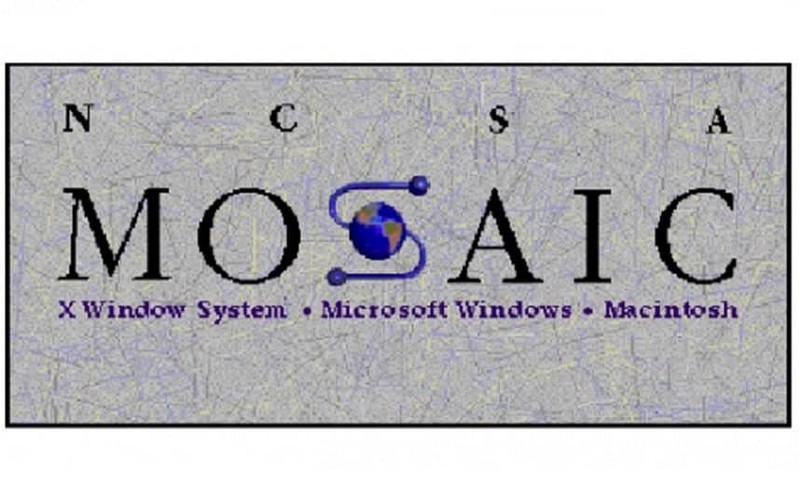
I’ve had this nagging feeling for a while.
I didn’t really know what it was, but it surely had to do with the insane scale of amazing new fields and opportunities that I have an interest in.
I find it hard to keep track of everything and especially to become an expert in any of those fields.
And then I succumbed to the idea that the acceleration of commercial-ready technology is just unmanageable for a single individual.
When the internet first showed up, it was really (I think) the only massively disruptive technology to show up after the transistor/computer.
But now, we live in the most exciting period of human and technological history and our progress is accelerating so fast, fueled obviously by the internet’s orgy of ideas, that so many more technologies have reached the phase where they can be deployed commercially and have the potential to change things as much as the internet itself.
This means that for every new sector, there is a specific community getting formed with people who are dedicating their life’s work to that specific field and developing deep insights and experience.
At the same time, there are innumerable startups being born in every field, and (from what I can remember) this represents a couple orders of magnitude more than the number of early startups in the internet, even compared to just 8–10 years ago.
With Mission and Market we’ve been lucky to invest in many of these sectors and I’ve been fortunate lately to have the time to study more in depth some of them. And to me, each one of the fields I list below represents an unmeasurable amount of opportunities.
But my brain is now tied in this constant dilemma, and I think it’s one that every VC or angel will have to come to terms with at some point:
should I try to keep track of all of it or should I just choose one and focus on that?
I don’t really have an answer yet, and for now I’m trying to keep my interest open to all of them (and new ones that keep on showing up!) but I’m not sure how long I’ll be able to continue doing that.
This goes back to the rise of the thematic / vertical VC fund, which I wrote about 3 years ago (oh man, time flies).
I think we’ll end up seeing even more of these funds and I think they will produce very decent if not above-average returns, given that now each vertical has the potential for multiple breakthrough companies.
Another point to briefly touch on is the value-add a generalist investor like myself could ever hope to bring to a very specific company in a new field.
Ron Conway and others have been made famous by their decision to focus exclusively on internet investing in the very early days (and have been awesomely rewarded for that), but now there are 10 new internet-like fields.
Will everyone who focused on one be rewarded like them? Will one field completely outdo all the others? Will investors just have to embrace all of them?
These are the questions that keep me up at night, and I hope to discuss them with many of you.
$(X) is the new internet
This is my personal list of fields that I think have a similar impact potential to the internet. It doesn’t take into consideration fields which I think have massive opportunity but not to that scale (eg. cybersecurity) or some that have already demonstrated that (eg. mobile) or some on which the jury is still out (eg. cleantech, which probably merits a discussion of its own).
Deep Learning is the new internet

The things that we’ve been able to achieve with deep learning in just a few years have been astonishing. For me, it’s definitely the most interesting part of machine intelligence.
Deep learning changes everything. It enables us to spot answers to questions that we dare not even ask just a few years ago and also create things which would have been impossible just a few months ago.
If we add other aspects of machine learning and, specifically, generative AI — the mind is blown away at every single new piece of information I gather on the space.
We’ve been fortunate to invest in Atomwise (finding new drugs thanks to DL), Enlitic (spotting lung cancer with DL) and Floyd (making it easier to run DL processes) — but there are SOOO many more that I’d like to be involved in and SOOO many more I’ve never even heard about.
I’ve also invested in a Deep Learning-specific venture fund with which I hope to get more exposure to the space — but I think DL will be so pervasive that I can never get enough exposure.
Blockchain is the new internet
I’ve recently seen a tweet by Joel Monegro of USV which clearly encapsulates my own thinking.
Web is boring. Blockchain is interesting.
— Joel Monégro (@jmonegro) March 11, 2017
The blockchain is really the first major disruptive computer science technology to come around that was entirely unexpected and has the potential to change everything.
I’ve been fortunate to know about Bitcoin since early 2011 (less fortunate to turn off my mining machine right after as it was about to boil) and have been following the space ever seen.
I now own a dozen different cryptocurrencies and have read probably triple that in whitepapers describing different decentralized applications (dApps) and currencies.
I’ve made (digital) money on some and lost (real) money on others, but the level of experimentation and excitement that is seen in the blockchain space and community in unrivaled.
Many paradigms are being completely redefined by blockchain technology. Decentralization is a really big force and I can’t seem to see an end to its advancement.
Finance, healthcare, manufacturing and more industries will ask themselves how they operated without the blockchain — just as we ask ourselves today how we operated without the internet.
Synthetic biology is the new internet
The amount of innovation happening in synbio is astounding. It is finally all within reach of “normal” entrepreneurs and outside of big University research labs.
We’ve been lucky to look at many deals in the space and even invest in some.
It is abundantly clear that the future will be powered by synthetic biology. So many aspects of it that we can’t even imagine.
Materials will all be fermented or grown, as will all sort of different food elements, especially animal-based food.
It will seem just absurd that we were wasting the Earth’s resources as well as breeding and killing billions of animals every year.
The economic value of old-school industrial production that is being impacted is incalculable and we will see the new Rockefellers in this field.
Genomics (and microbiomes) is the new internet
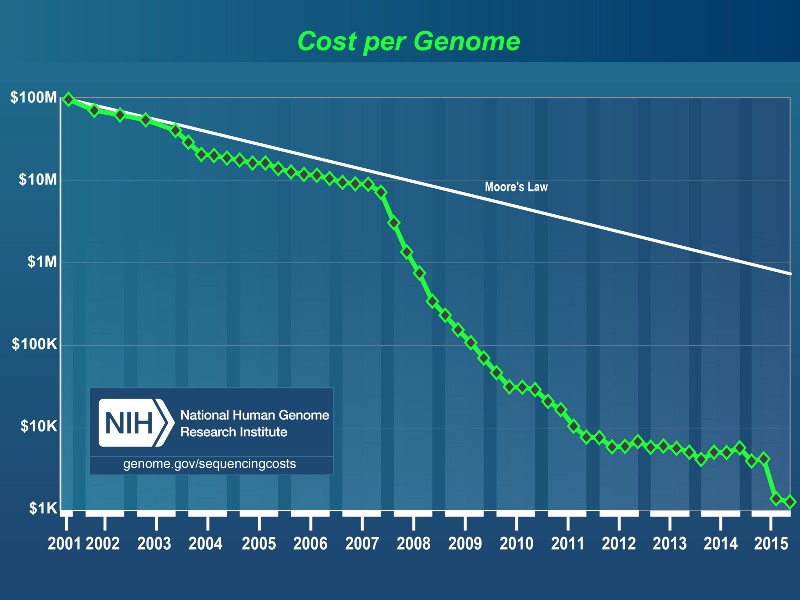
This image should make everyone insanely excited. For the first time in history we’ll be able to understand how we’re made and why we do some of the amazing things our bodies make us do.
With RNA sequencing, and microbiome understanding, we can even monitor our bodies responses in real-time to various diseases and drugs. We’re investors in the pioneering RNA sequencing company and we’ve seen the future. It is amazing.
But it doesn’t stop at understanding.
With CRISPR-Cas9 we can actually change our DNA and impart new instructions. This is just mind-blowing. We’ve been small investors in Caribou Biosciences (thanks AngelList!) and we feel like we’re watching the future unfold.
The advances being enabled by CRISPR are still pretty incomprehensible but we are seeing more and more entrepreneurs using this tool, as well as developing parallel tools (DNA cell delivery, etc.).
It’s a new world.
Robotics is the new internet
We’ve all seen Boston Dynamics’ videos of their andro-dogoids and we’ve all been amazed / scared.
The reality is that robotics is today way more advanced than we thought. Just walk in a factory anywhere in Europe and you’ll see robotic arms and other autonomous systems.
Slowly we’re automatic all the repetitive tasks.
We routinely see videos of cars and trucks being driven by themselves.
Autonomous hardware systems are beginning to become a whole new sector with a vast amount of applications (and already many $B exits).
As software and materials become cheaper, we’re going to see many more of these companies. And when we’ll have billions of robots deployed, the opportunities for companies will be endless.
IoT is the new internet
I haven’t followed the IoT revolution as much as I wanted, but it does feel like another field which is slowly becoming a massive platform and opportunity.
I don’t think we can really understand the impact of receiving data from and being able to interact with trillions of objects in real time.
Unsexy maybe, but still revolutionary.
Voice technology is the new internet
Most of you will have an Alexa in the house by this time. We have a Google Home and even if it’s not loved by all, conversational software enables a host of new use cases and thus many new potential companies.
It feels like this is a game reserved for the big ones, but I believe there will be a wide interest from startups and we’ll see some tools that will become comparable to our best friends in the future.
Voice, like all the other areas listed here, is a completely new platform — and will see very specific apps that couldn’t be built anywhere else.
3D Printing is the new internet
3D Printing is yet another completely different area that is a platform onto itself.
It basically brings all of the advantages of the internet to physical things.
Sure, it might still be very early, but the potential is clear and massive. I think it’s really incalculable.
The ripple effects of a usable and economical 3D Printing revolution would change the world as we know it, and enable a myriad new companies.
VR/AR is the new internet
I truly think that in the next years we will spend as much time in VR as in the RW.
We’ve already seen the first few $B exits in this space and it’s just the beginning.
The promise of companies such as Magic Leap just compound this even more.
I think in 15 years we will not have computer screens anymore and will think that they were the most limiting aspect of modern life.
“Do you remember when you could only see what was on your small little screen? LOL”
Clearly opening up a new world, opens up a whole new economic paradigm too. We need everything new in VR. Operating Systems, networks, games, productivity tools, and even more of what we can do today on the internet. Sure some will be just moved over by internet companies, but many VR-native companies well be born — and they will be huge.
We can see this thanks to our investments in FOVE and Limitless, which is redefining how we create experiences in a VR-native fashion.
What am I missing?
I’m sure there are a few other fringe areas that have the potential to be platforms of massive change (microfluidics? nanotech? alternative currencies?).
Let me know where I should be looking at 🙂
Thanks to Yannick Roux for reading a draft of this post.
The 26 most innovative venture capital firms
A look at who’s innovating the business of funding innovation

Every new VC firm that launches touts to be a “new breed of venture capital firm”, but the reality is that most of the time it’s just a straight up old-school VC model.
That being said, VC has seen some massive innovation in the past decade: the rise of the super angels, the subsequent explosion of seed funds, VC blogging, AngelList — today the fundraising environment is certainly different for founders.
As I’m thinking through how to approach investing in Europe (I’ve just moved back here), I started to recall and research the most innovative VC firms and models that I’ve seen in the past years.
Here you can find a list of firms that I think brought the most innovation to the VC landscape in recent times. I’m sure that I’m missing a bunch more, so feel free to tweet me some more and I’ll add them.
Disclaimer: My small investment firm, Mission and Market, is an investor in a number of companies that received prior or further financing by many of the VC firms mentioned in this piece. I try to mention those in the details, but I’m surely biased even only for my knowledge of these firms’ existence.
I know the recommend button is all the way down, but if you think this is interesting, I’d appreciate a click 🙂
In no particular order:
Correlation Ventures
Correlation Ventures was the first fund to be marketed with the data angle.
I think their strategy is pretty smart, and surely new: they aim to be the dream co-investor for teams looking to fill out a round.
They use analytics and get to a decision in less than two weeks, which is impressive — as their portfolio is, given they’ve made more than 160 investments.
They’re investing out of their second $188M fund (the first was $166M).
AngelList’s Syndicates + Maiden Lane
AngelList has completely changed the early stage investing world, plain and simple.
From intros, to profiles (I use AngelList more than LinkedIn nowadays) and now syndicates it continues to innovate like no other in the venture space.
In particular, Syndicates are the stuff of the future. I’ve been investing in Syndicates sporadically but I’m just stunned at the quality of the stuff I get to see. It’s certainly not perfect at all at the moment, but if you want to innovate this is the price to pay — and I’m sure it will become so in the future.
On top of this, Naval is truly an extraordinary brain and person. Everyone who had the chance to interact with him knows how sharp and kind he is. He’s always been very generous of his time with me.
One of their most recent efforts which had everyone pretty stunned was the announcement of a syndicates-only fund.
This is pretty bold. It’s basically saying that the concept of “proprietary” deal flow is outdated and that by using AngelList anyone can create a well-performing venture fund. The implications of this are hard to fathom, but if you take a look at their portfolio I’m sure you’ll be impressed.
Lots to think about.
Flight Ventures
Gil Pencina is one of the best angels around, having invested in every single major tech company — and he’s also one of the first to have spotted that Syndicates are probably the future of early-stage investing. I deeply respect him for this.
Gil wants Flight.vc to become the Fidelity of startup investing. You choose the vertical, theme or location and Gil will have a syndicate for you to back.
He recruits managers for each syndicate, which do all the work and then he helps them by reviewing the deals and, most importantly maybe, getting the money to flow.
I’m now also an investor in one of his new funds (devoted to deep learning in this case), which are evolving the model even further.
SignalFire
I had the pleasure of meeting Chris in 2013, just after he left General Catalyst and was impressed with his very ambitious vision.
Chris rightly observed that for an industry that is constantly immersed in software, it has used very little of it to innovate. So he set out to create a firm that uses a lot of software to spot investment opportunities as well as help out its companies.
Its software tracks talent and can be used to spot people that are about to start companies as well as help its portfolio companies hire top talent, which is often the #1 problem for companies that need to grow fast.
Signalfire also has a distributed model where top people in Silicon Valley actively help the portfolio companies, and in exchange get access to the software (and I guess better economics on the fund as LPs).
They raised a first $53M fund and should be just about done raising its second $300–350M fund.
Deep Knowledge Ventures
DKV is another pretty futuristic firm that touts its use of data as a competitive advantage. They use a software created by a 3rd-party company called VITAL to spot investment opportunities (mainly in the life sciences sector) — they even named the algorithm to the board in a PR move.
They have launched a specific Life Science fund and are about to launch a new Digital Capital fund focused on BTC, blockchain, AI, data, etc.
Not much else available about them unfortunately.
Tusk Ventures
Tusk recently participated in the A and B rounds of one of our portfolio companies, and I couldn’t be happier.
They’ve developed a brand in Silicon Valley for helping companies navigate hard and uncertain regulatory terrain, which in this case were the #1 risk for the company — having a dedicated team for that makes you a bit more comfortable.
Tusk Ventures gets some serious equity for their work (they also now have a fund, and I don’t know if they invested cash or services) which is oftentimes very lucrative for them, given their first client was Uber.
There have been a lot of work-for-equity schemes around obviously, but I specifically like this one because it is a very scarce skill-set that can actually command equity from top startups (vs say a design firm, of which there are a ton and for which top startups would just pay cash).
Redstone Digital
These guys are sharp. I’ve found them randomly only but I’m impressed with their model.
Redstone basically offers a “VC-as-a-Service” model to big corporates or other type of LPs.
So, instead of saying: “give me your money and we’ll see in 10 years how good we were at managing it” they’re going to these huge institutions and telling them “hey, why don’t you build your own corporate venture fund? we’ll do it for you, but it’ll still be yours”.
That’s a massive value proposition to companies that want to dip their toes in the corporate VC world, but have no idea where to get started and also want to be in control of what they invest.
In this way, Redstone is able to build a massive AUM base for which I imagine they get both fees and carry in a shorter amount of time — while having access to the corporates firepower.
Some conflicts of interest for sure, but if managed correctly this could be a very solid business
Kima Ventures
Kima is a hybrid French / Israeli firm, which in its short existence (6 years) has invested in more than 400 companies.
They do so by moving extremely fast and making investments as often as 2–3 times per week. They invest globally which helps widen the funnel.
The team is distributed and I had the chance to recently meet with Vincent, their partner in London.
On top of being extremely entrepreneur friendly in their speed, they have also built a first in the VC world, a status tracker for their evaluation of a deal: https://status.kimaventures.com/
500 Startups
Dave McClure certainly needs no introduction as well, but his work with 500 can’t be looked over.
Dave has pioneered the high-frequency “index” model of startup investing, with the belief that investors can’t really pick the winner so the best way to invest is to just invest in a whole lot of companies and then follow-on on the best ones.
This approach has made him quite a few enemies in the valley, and didn’t give him a very easy time while in LPs boardrooms (maybe paired with his unorthodox clothing, language and methods) — but I think the numbers will show his acumen in the long run.
I’ve had the chance to shadow Dave for a few weeks back in 2011, and have been extremely impressed by his vision and ambition.
In the time that passed, he has been launching vertical-local funds all over the world given his other thesis that the next big unicorns will be founded all around the world — and he’ll be there first to get a shot at all of them.
Y Combinator
YC has probably had the most impact on the venture scene in the last decade than anything else.
I’ve been fortunate to participate in a YC batch with my company to see what the hype is all about.
Jessica and Paul are true visionaries, and with the ambition of Sam YC is not really stopping for a moment.
It’s crazy to think that when they first launched, there was no early stage acceleration program for startups — with the millions that exist today — but it was really thanks to them that all of this movement was born and that so many people now are even aware of entrepreneurship as an avenue for their future.
SOSV
I’ve gotten to know the guys at SOSV through their Indie.bio program which is run in SF by Ryan and have been extremely impressed with their approach.
They create a number of vertical accelerators and exclusively fund all operations and investments, plus they have a core fund that follows on on the best graduates.
This gets all of the benefits of the vertical approach (high value add, good screening capacity, great deal flow), with the diversification of different verticals.
We’ve invested in two of their companies and are looking forward to finding even more.
They tout $250M AUM, 500 startups and a solid 30% net IRR.
You should read the fascinating story of the founder.
Entrepreneur First
I can’t recall the amount of times that, while chatting with people about what to do next, I got suggested to look at Entrepreneur First as one of the coolest new models around.
EF is a pre-idea entrepreneurship program. They take the brightest young minds from the top universities in the UK (and abroad) and help them meet other people and launch a startup.
I’ve always seen two major risks to this approach: 1) inexperienced just-out-of-school people, which can be great for social software, but probably a bit less so for hard-tech B2B companies and 2) co-founder mismatches and problems, given you’re literally meeting your co-founder for the first time at the program.
But they seem to have solved for both risks: on top of recent graduates, they are now targeting people coming from Tier 1 companies, and they say they have developed a great program to match people.
The results have certainly been brilliant, given Twitter has bought up one of their companies for $150M, and the others are not doing to bad either.
Indie.vc
Indie.vc is the grand experiment in alternative funding model for startups by Bryce Roberts, a partner at OATV.
He’s questioning the assumption that startups need only to focus on hyper-growth and not on just creating a sustainable, profitable business. Thus, indie.vc has a model where it will get paid back by dividends from the company, specifically it will get 80% until it gets paid 2x and then 20% until it reaches a hard cap of 5x its investment.
Meanwhile, should the company decide to actually go for hyper-growth and raise additional funds, its investment will just turn to equity at a pre-negotiated conversion price.
My view here is that this is an awesome and very much needed experiment. Indie.vc thus will have a portfolio of a few companies that will raise more money where it will get equity and have a potential 5x return from the ones that don’t. Given this approach would tend to find companies that are inherently less risky, it might yield a pretty interesting return.
They’re now on their v2, raised a specific fund and make $100k-500k investments.
Best of luck to Bryce on this amazing effort.
Lighter Capital
Lighter Capital is not really a VC fund per se, but actually a VC-funded startup. They raised $17M for their operations, and invest out of a $120M LP pool.
Lighter provides revenue-based financing to SaaS businesses. That means that you get a check for say $100k, and have to pay them back a multiple of that amount, and such payments come out of your revenues — the more you grow, the more you pay.
They write checks of up to ⅓ of a company’s annualized revenues and don’t get any equity.
This is an extremely smart model, which drives probably around 30% annual returns with much lower risk than what VCs have.
Lighter Capital is able to use a lot of data and metrics to project revenues and is completely uninterested in the final outcome of the company, they are just very aligned in the short term to help it grow fast (so that they get paid back earlier, and thus generate better IRR).
A solid solution for people who don’t really want to give away equity but have a solid business and could use a boost.
Bullpen Capital
I had the pleasure of meeting Paul and Duncan from Bullpen after they invested in a company I worked at — and remember being instantly impressed with them.
They were the firsts to aggressively go after a clear opportunity in the VC market: the famous “Series A” crunch.
Bullpen figured out that with the massive explosion of seed funds (themselves pretty innovative at the time), and the shrinking of the later stage VCs post-bubble, there was now a massive opportunity to find underpriced post-seed deals.
They have been thus able to invest in companies that needed just a bit more time before raising their Series A, but whose seed-round VCs wouldn’t bridge. This means getting companies that are fairly de-risked but still very cheap.
It looks like it’s going well for them as they’re already on to their third $75M fund (the previous ones were $24M and $31M).
I also highly suggest listening to Paul’s interview with Harry Stebbings on the 20minVC.
Data Collective
If you know Matt, you already know he’s the man. Add Zack to the mix and you get one of the best new firms around.
DCVC’s innovation stems surely for its approach to backing extremely deep tech, but also from employing a “collective” approach of giving experts (LPs and not) meaningful carry in exchange for their help vetting and helping its portfolio companies.
These are solid people, and include DCVC’s equity partners include Jawbone’s VP of Data Monica Rogati, Facebook’s and now Google’s head of analytics Ken Rudin and Factual founder Gil Elbaz.
What I particularly like about DCVC is that they get all the marketing and operational advantages of having a “vertical” fund (focused on data advantages), and are able to still be extremely broad in the target markets.
They are now investing their fourth core fund, of $177M, with previous funds having been $140 Fund III, $75–100M Fund II and $6m Fund I.
They also have two $125M opportunity funds.
We are investors in 3 deals where Matt and Zack invested, and have also been honored to receive a small check from DCVC in my company’s seed round so I might be biased, but think there are few funds of this quality around.
Another great 20minVC episode to listen to.
Upside Partnership
Kent Goldman was exposed to innovation in VC early on, being a principal and then a partner at First Round Capital — one of the great early innovators of the seed model (almost 12 years ago!).
When he left and decided to start a new firm, he took a spin on the model and made every single entrepreneur he invests a carry holder.
That should ideally foster a deeper sense of community and shared goals between all of the portfolio founders.
The percentage of carry reserved to founders is probably around 20–40%. The first fund is a $35M vehicle.
Many firms have entrepreneur or exchange funds, but I think this is the first of its kind.
I don’t know Kent, but we’re co-investors in a deal that I like a lot, so I hope he does really well 😀
Foundry Group Next
Brad Feld obviously needs no introductions and his leadership in the changing tides of VCs, with the new breed of “blogging VCs”, has been impressive to watch.
Recently Foundry Group raised a “Next” vehicle which enables Foundry to invest in later stages rounds of its own portfolio companies (like a traditional opportunity fund), invest in other VC firms (like a fund of funds) and invest in later stages deals coming out of these other firms and the broader network.
Very cool stuff. Brad clearly has seen the benefits of his huge efforts of helping other people and institutionalizing his efforts by raising a hybrid fund such as this one are a really cool and creative move.
Andreessen Horowitz
Rising from a brand-new firm to the top 3 in the world in half a decade is just unheard of, and yet this is exactly what A16Z did.
Aside from the brilliance and power of Marc Andreessen and Ben Horowitz, which would probably have made them Tier-1 VCs anyways, what was most impressive to see was their rethinking of the VC model.
When you visit the A16Z offices, it doesn’t feel at all like you’re in a VC firm (even if they kept the old tradition of being on Sand Hill Road..). Their goal is to model the firm after a creative agency, and employing more than 100 people it seems like they’re commit to it.
The DAO
One of the most ambitious and revolutionary projects in recent memory, the DAO raised more than $100M in Ethereum to build a decentralized venture fund.
It then famously collapsed under a hack which found some loopholes in the code, but it still made a lot of people think about the possibilities that blockchain technology introduces in the venture capital space.
Cota Capital
I wanted to include Cota, a not-so-well-known SF-based VC fund, because of their smart approach to long-term investing and structuring.
Cota is the “union” of the efforts from Ullas Naik (Streamlined Ventures) and Bobby Yazdani (Signatures Capital).
I got to know them as they invested in my company and learned that they decided to structure their vehicle as a hedge fund (as evidenced by their SEC Form D).
This enables them to have a longer term horizon, and be a great alternative for LPs who like to have more flexibility with their capital and can’t commit for a long period of time.
Draper Esprit
One of the many vehicles tied to Tim Draper, Esprit (which was formerly called DFJ Esprit) is innovative in the fact that it actually IPOed on the London stock exchange.
This allows the firm to not be bound by the traditional 10 years fund lifecycle and supposedly have a longer horizon for its investments, consequently enabling them to make bolder bets.
It’s certainly an interesting model, with a bunch of pros and cons, and I’m really curious to see how it goes for them.
137 Ventures
137 is focused on investing in late stage companies by acquiring employee’s shares or lending against them. This is super smart as they get access to some extremely proven companies, at lower-than-market valuation, and can do so at any time, with small check sizes.
They raised three funds ($137M, $137M and $200M) and even poached the great Elizabeth Weil, that I had the pleasure of meeting while at A16Z.
FundersClub
FundersClub is an online VC, as in they’re using network effects to run a centralized yet community-driven VC firm.
So, differently than AngelList, they actually have a FC portfolio. They don’t fund direct competitors, but pick one team to back per market opportunity, and then try to actively add value.
They’re also doing some interesting stuff with funds and partnerships.
Unshackled
Unshackled is a super smart arbitrage play. They market towards all the people that are stuck with US work visas or want to get to the US.
In exchange for equity, Unshackled not only provides cash but also acts as an employer and visa sponsor for founders. That’s gotta be genius.
Unshackled raised some $5 million from some 80 A-listers like Laurene Powell Jobs, Jerry Yang and Bloomberg’s venture arm. A larger financing round is said to be in the works.
Studios (Science, Expa, etc.)
The studio model has fascinated me for quite a while, and I even compiled a long list of them (which I’ve since stopped maintaining because every week there seems to be a new one).
It surely isn’t a new model (IdeaLab has been doing this forever), but more and more hybrid examples are launching and I think it’s worth to keep track of it.
If you’re able to make it work (it’s really hard), the economics can be absolutely amazing, as you end up owning a significant part of the company.
One of the newest interesting hybrids is Expa, which couples it studio activity with its venture investing and also acceleration program. Going full circle.
Vertical Funds (Seraphim Space Fund, Rock Health, etc.)
Again, not a specific fund here as much as the concept of a fund that focuses deeply on one vertical. We’ve seen with Data Collective that this can be done on a very broad horizontal theme, but oftentimes it can make solid sense to do it in a vertical market.
Obviously, the market needs to be absolutely gigantic, otherwise it becomes really hard, but given the right market the pros can fast outweigh the negatives.
In this regard, I think the performance of Rock Health (which started as an incubator) can be a very good example of the possibilities.
Scout Programs
The WSJ scoop on Sequoia’s scout program was a defining moment for me to understand the ambition and innovation of the best people in the business.
Sequoia clearly doesn’t need to differentiate in order to get fresh LP cash, as it can raise however much it wants.
But it surely still needs to make sure it’s always relevant and on top of what is happening in new areas.
The scout initiative was a really well played move, that’s been used by countless other VCs with varying degrees of success as we speak.
I hope that this list can be inspiring to current and future managers that want to bring some innovation to the VC landscape. If you’re exploring alternative and innovative models, I’d love to chat. You can find me on twitter here or via email.
Fundraising is supposed to be hard

As is running a startup
A day doesn’t go by where I don’t hear people saying that the fundraising process for startups is too cumbersome, hard to navigate for new entrants and inefficient.
I’ve raised $3.7M for my own company from top investors and invested in more than 40 companies by now, and I’ve come to form an opposing view: fundraising is supposed to be hard, and anything that makes it much easier introduces more risk in the ecosystem.
Having run a startup for a while, what I came to realize is that fundraising is actually the easiest part of running a company.
Hiring the best in class leaders, selling a half-backed solution, making a great product, navigating uncertainty, getting distribution and all of the other million tasks in the daily life of a startup founder, are all way harder than fundraising.
Additionally, most of those things have never been done or learned before by a startup founder, whose top quality should be learning fast while on the move.
Getting a warm intro, understanding how VC funds and partnerships work, what the process is like and what VCs expect of a startup founder, is the first big test to see if someone could ever even think of running a high-growth organization with big potential.
The counter argument usually used lies in the fact that VCs tend to fund people like them and people they know, but I find that to be rarely the case. In our portfolio we have entrepreneurs from a wide number of countries, races, sexual orientations, political opinions and religions. 95% of them we didn’t know before and few had friends in common with us.
Y Combinator and other very early stage efforts have leveled the playing field by giving everyone (who deserves it) an equal shot at starting a tech company. More efforts at this stage will always be very impactful as they put people who might be discriminated in different way on the same starting line, but after that meritocracy kicks in and founders need to demonstrate that they are up to the task for which they are asking other people’s money.
(edit: this has been sitting in my draft folder for a bit, and just noticed Marc Andreessen said something along the lines in his #startupschool talk).

Ideas aren’t worthless
I wrote this post years ago on my personal blog, but after having invested in ~40 companies (and raised a multi million $ seed round) I’m way more convinced about it and wanted to share it again here on Medium.
Let’s end this bullshit now. Ideas are not worthless. Ideas are important and the very foundation of every successful company.
TL;DR at the end.
The “ideas are worthless” mindset
I feel the industry is failing in messaging a very important point, and that is the fact that ideas are not the only thing in the success of a company. Being in love with the valley’s state of mind, I too have been drawn by this to think that ideas are worthless and execution is king. I actually believed this and told this to every founder that came in pitching their business while I was working in VC as well as almost everyone who asked for advice.
Well, turns out I was wrong. I’m sorry. Your idea was not worthless (even thought it was probably pretty bad).
It took me a while, but slowly I realized how broken this mindset is.
What is an idea?
It might help to define what we’re talking about.
I like to think about an idea as the sum of:
- finding a pain
- in a fast growing market
- hypothesizing a product or service solution
- and understanding how to bring it to your customers
So, for me at least, an idea is not: “hey, let’s build an app to get a black car”, but more of:
- getting a cab sucks
- transportation is enormous and people hate driving their cars around, parking is scarce and expensive
- the easiest thing to do is to work with black cabs
- we’ll build it as an app and get it to the tech elites in SF to make it look exclusive
It’s a story.
Do VCs value teams or ideas?
Valley VCs like to make you think that they only decide on investments based on the team, but in reality (consciously and unconsciously) what they are really valuing is a mix of factors, best represented by your idea (as defined above). The questions a VC asks and answers in his mind are along the lines of:
- does this make sense? Is there a real pain and opportunity? Is the solution smart? Will people use it?
- is there a big and growing market for this? if not, can it create a new market?
- is this the right team to execute on this idea?
You only get to the team part if the ideas makes sense and the market for it is huge. On top of that, you have to be the perfect fit for the idea you chose (right skills, unfair tech or knowledge advantage, etc.).
Only very few and very early investors can afford to invest based exclusively on the team (Y Combinator most of all), and are probably skewing the message that needs to pass to entrepreneurs.
When I raised my multi-million $ seed round, no one dug into the team’s expertise as deeply as they did into the pain, market, solution and customer acquisition strategies.
The canonical pushback on the argument that ideas are important is the following.
Ideas are cheap. What matters is execution.
Which I would rephrase as:
Bad ideas are cheap. Good ideas are extremely rare and executing them is incredibly hard.
Ideas are valuable. Good ideas are scarce.
And when an investor finds one, he’ll definitely get interested into it even if he’s never heard of the team. That doesn’t matter that he’ll be funding it or that it will work.
There’s one catch tho: evaluating ideas might be one of the hardest and most counterintuitive thing ever.
Paul Graham recently wrote:
“the best startup ideas seem at first like bad ideas. […] if a good idea were obviously good, someone else would already have done it. So the most successful founders tend to work on ideas that few beside them realize are good.”
Not many investors realize good ideas actually look pretty dumb in the beginning to people who still can’t connect all the dots together. That is as true as hard to admit for an investor, so big kudos to PG on that.
This is also the only reasonable counterargument to the “ideas are important” philosophy: “ideas are extremely hard to evaluate”. YC now actually lets you apply without an idea. Does this mean that ideas are worthless? No, it means that they are receiving a ton of bad ideas and want to make sure that good founders work on good ideas. So often smart investors will strip down the idea into its core parts of market, opportunity and solution and will evaluate on those before moving on to the team.
When is an idea good or bad?
At this point we should probably start to explore what makes an idea good and what makes it bad, cause this is where most of the confusion happens. But don’t hold your breath, I don’t really know. I like to think that you have a good idea when you have a good number of those elements:
- A deep understanding of something specific. An obsession.
- Knowing something is true that almost nobody agrees with you on (cit. Peter Thiel)
- The realization of a problem, gap in the market, future market shift
- A creative and innovative way of exploiting that knowledge
- A new enabling technology that dramatically lowers the barrier to creating something (better if proprietary)
- A marketing insight to get people to notice your product
- Some unfair competitive advantage and barrier to entry in respect to other competitors
A good idea is derived from spark, creativity, business acumen, luck, technical knowledge, madness, experimentation and sometimes laziness.
Wow cool, so that means I should ask everybody to sign an NDA before telling them my idea!
Not even in the slightest. Even tho ideas matter:
- execution is still what makes them successful
- you should have had the idea because you are passionate about the market and have either an obsession or deep knowledge that other people don’t so:
- other people will probably not think that your idea is good and thus:
- nobody will even consider copying your idea when they have an already long list of theirs to execute
- As a bonus, I’m a firm believer that you should be the right team for the right idea (probably another post about that too), meaning that anyone who copies your idea should fail. (They called this founder/product fit in the meantime)
But what about pivots? Every successful company pivoted from an original idea to something different!
You can’t pivot yourself from a stupid idea in a small market into a great one. Your original insight has to be a decent one first. you have to find the pain.
A pivot should come from a much better understanding of the market, the customers, the technology etc., and should be the ultimate good idea.
A pivot is not: oh photo sharing didn’t work so I’m going to do a subscription e-commerce for pets. And, as a bonus, a pivot is not: “oh podcasting didn’t work so let’s do status updates”, cause that should be phrased like “ok podcasting didn’t work, it was a bad idea because there was no market for it, let’s call investors and tell them they can take their money back or stick with us while we work on a new thing”. That’s not a pivot, but a new company entirely.
SHOCKER: most people invested in Twitter when it was already Twitter. And everyone invested in Facebook, Square, Evernote and Dropbox, when they were already working on the companies we know today.
Further awesome reading: The only thing that matters by Marc Andreessen (spoiler: it’s the market).
—
Happy to chat more about it on Twitter here



